Geschichte & Renovierung
Origin of the museum
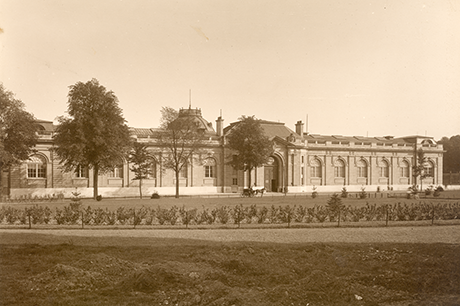
The origin of the AfricaMuseum dates back to the Brussels International Exposition of 1897. At King Leopold II’s behest, the ‘Colonial Section’ of the exhibition was moved to the Africa Palace (formerly known as the ‘Colonial Palace’) in Tervuren. The exhibition halls were home to naturalised animals, geological samples, commodities, Congolese ethnographic and artistic objects and art objects created in Belgium. An African village was recreated in the park and housed several Congolese during the day. Seven of these Congolese individuals died during their time in the village.
Leopold II saw the museum as a propaganda tool for his colonial project, aimed at attracting investors and winning over the Belgian population. It was in 1898 that the temporary exhibition became the first permanent museum of the Congo. The institute has always served the dual purpose of museum and scientific institute.
Very early on, the Africa Palace turned out to be too small. Leopold II called on the services of Charles Girault, the architect of the Petit Palais in Paris, and embarked upon an ambitious construction programme. The plans were for a complete site with a new museum of the Congo, an international school, a congress centre, a station, Chinese pavilions and a sports centre.
These construction projects were financed by the profits from the royal private domain of the Congo. As Leopold II had died before the works were completed, it was King Albert I who inaugurated the museum on 30 April 1910.
The name of the museum has changed several times in the course of its history. From Museum of the Congo, it became the Museum of the Belgian Congo when the Congo Free State became the Belgian Congo. In 1952, by Royal Decree, the museum became the Royal Museum of the Belgian Congo. It finally became the Royal Museum for Central Africa at the time of Congo’s independence. Since the renovation, the museum is more commonly known as AfricaMuseum.
The renovation
The AfricaMuseum reopened on 8 December 2018, after a five-year renovation. The permanent exhibition was outdated and its infrastructure was obsolete, but the biggest challenge was to present a contemporary and decolonised vision of Africa in a building which had been designed as a colonial museum.
Access to the museum is now through the new visitor centre, which hosts a ticket office, shop, restaurant, picnic area for children and cloakrooms.
The visitor walks along the new underground gallery then heads into the basement of the former edifice, where an introductory exhibition looks at the past, the present and the future prospects of the institution. The inner courtyard of the museum building has been excavated to create a light shaft and provide space for music workshops.
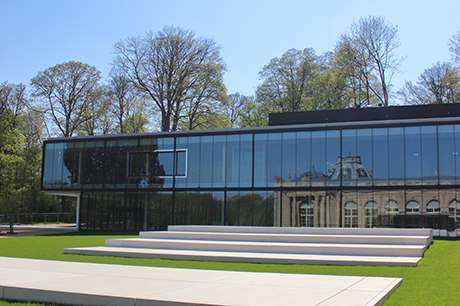
On the ground floor, the exhibition is divided up into five thematic zones that are primarily dedicated to Central Africa.
The renovation of the museum building and the construction project for the new building and the underground gallery were awarded to the multidisciplinary Temporary Association Stéphane Beel Architecten (TV SBA).
The listed building was renovated and restored in accordance with the original plans of the late 19th century, while integrating modern techniques.
The scenography
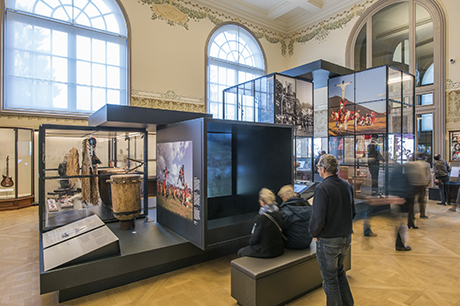
The total surface area, accessible to the public, has increased from 6,000 to 11,000 m².
The scenography is the work of Niek Kortekaas and Johan Schelfhout, who created a great balance between the restored listed windows and the new central platforms.
Introduction of contemporary art
Exhibiting contemporary art in the museum galleries seemed an obvious choice when the museum decided to redesign its permanent exhibition.
The aim of the museum is to invite artists to utilize the existing collections, to (re)discover them, to interpret them. The work of the artists on the collections represents an added value for the museum, accompanying the work of decolonisation. In this project, special attention was given to the spaces in the museum that have an explicitly colonial tenor.
This context underpins the AfricaMuseum’s collaboration with artists from Africa or with African roots. They include Aimé Mpane, Freddy Tsimba, Michèle Magema, Aimé Ntakiyica, Méga Mingiedi, Bodys Isek Kingelez, Chéri Samba, J-P Mika, Shula, Sammy Baloji, Chéri Benga, Chéri Chérin, Barly Baruti, Iviart Izamba,Thérèse Kirongozi and Nelson Makengo.
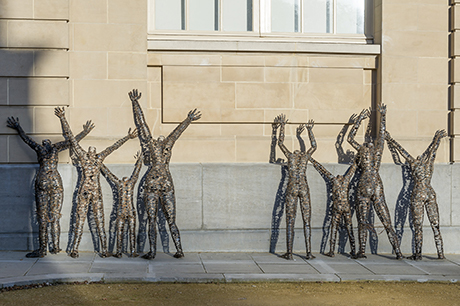
The grand rotunda
The grand rotunda of the AfricaMuseum is a perfect symbol of the museum's approach. The room itself invites criticism and commentary. During the renovation, there was talk of removing the colonial statues from the niches in the grand rotunda, but the Onroerend Erfgoed (Flanders Heritage Agency) indicated that they were an integral part of the listed building.
The AfricaMuseum then launched a competition for African artists or artists with African roots to create a work of art that could countervail the colonial statues. The Congolese artist Aimé Mpane was selected by the jury for his work Nouveau souffle ou le Congo bourgeonnant, a monumental openwork wooden statue that was placed in the grand rotunda shortly before the reopening of the museum.
Despite explanatory texts, many visitors expressed that they did not always perceive the museum's desire to convey a decolonial message in the grand rotunda. A working group of the UN (Human Rights Council) also strongly urged the museum to suppress all colonial propaganda and to clearly present the violence and inequalities of Belgium's colonial past.
In response to these criticisms, Aimé Mpane was invited to place a second sculpture in the grand rotunda. This work, also in openwork wood, represents the Skull of Chief Lusinga and refers to the raid by the Belgian officer Emile Storms on the village of Lusinga in 1884, an expedition during which the chief's head was cut off before being taken to Belgium. The skull was kept at the RMCA until 1964 and then passed on to the Royal Belgian Institute of Natural Sciences.
The two wooden statues face each other; one referring to the death and violence of the past, the other to dignity and the promise of the future.
Aimé Mpane then asked the Belgian artist Jean-Pierre Müller to work with him in confronting the heritage represented by the set of colonial statues in the rotunda and the fraught history they embody. Their project RE/STORE presents a set of sixteen semi-transparent veils, hung at a slight distance from the existing statues, and on which contemporary images are printed. Their superimposition creates a visual and semantic shock that allows a new reading of a heavy heritage and challenges its historical and ideological content.
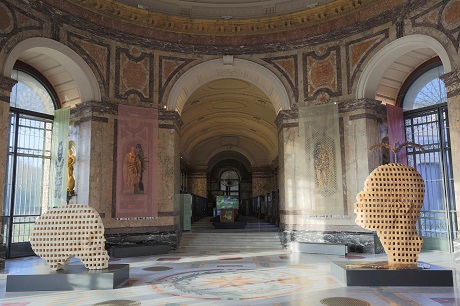
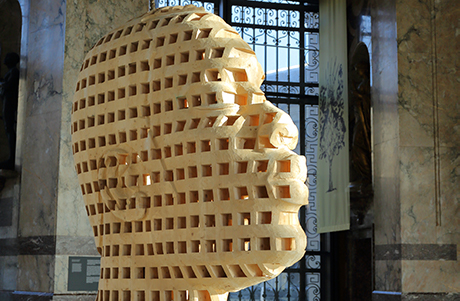
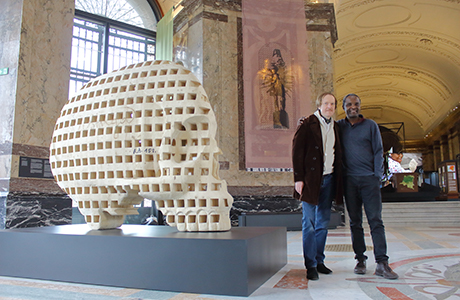
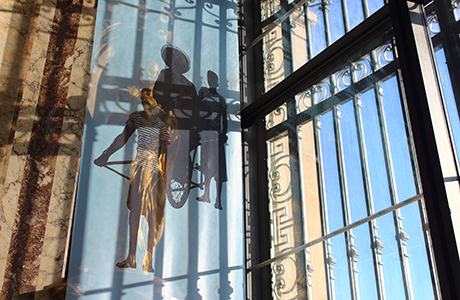
> More information about the grand rotunda: in French or Dutch.
